Serializability is a concept that helps check if schedules are serializable. A serializable schedule always leaves the database in a consistent state. Non-serial schedules may cause inconsistencies, so serializability checks if they can be converted to an equivalent serial schedule to maintain consistency. Different types of serializability include view serializability and conflict serializability. View serializability requires schedules be view equivalent to a serial schedule with matching initial reads, final writes, and update reads. Conflict serializability converts a schedule by swapping non-conflicting operations, where two operations conflict if they are in different transactions, access the same data item, and one is a write.
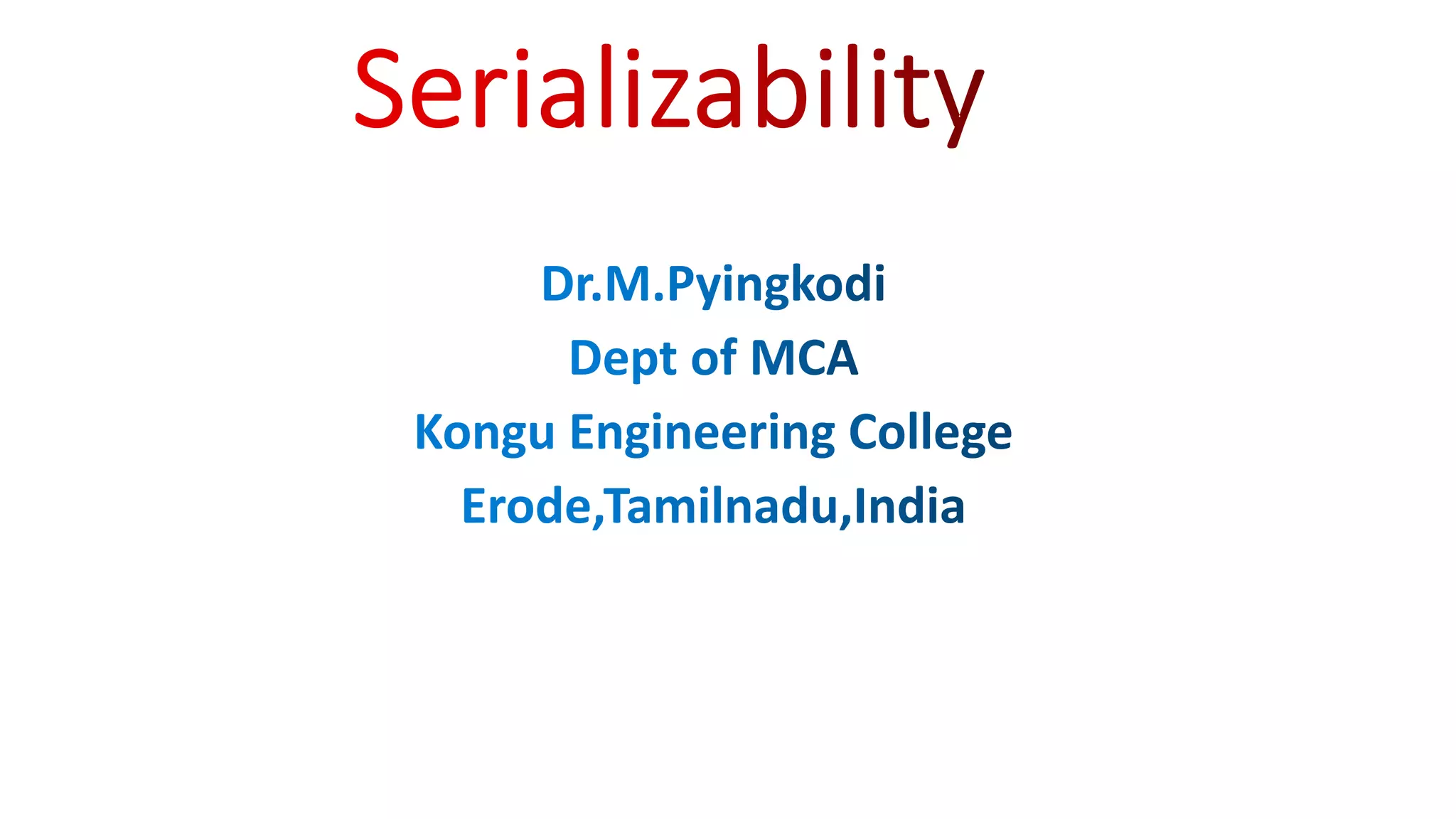
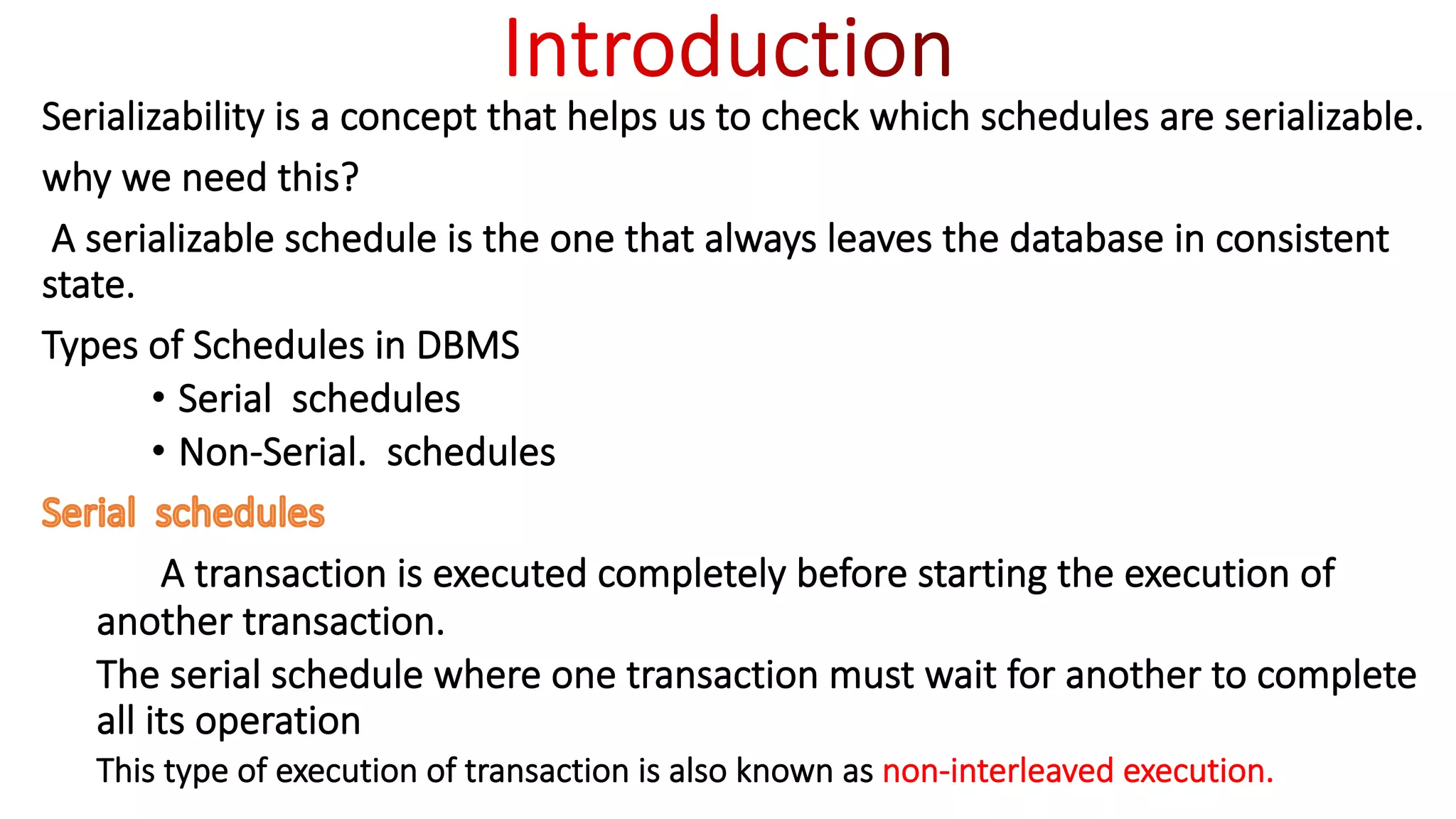
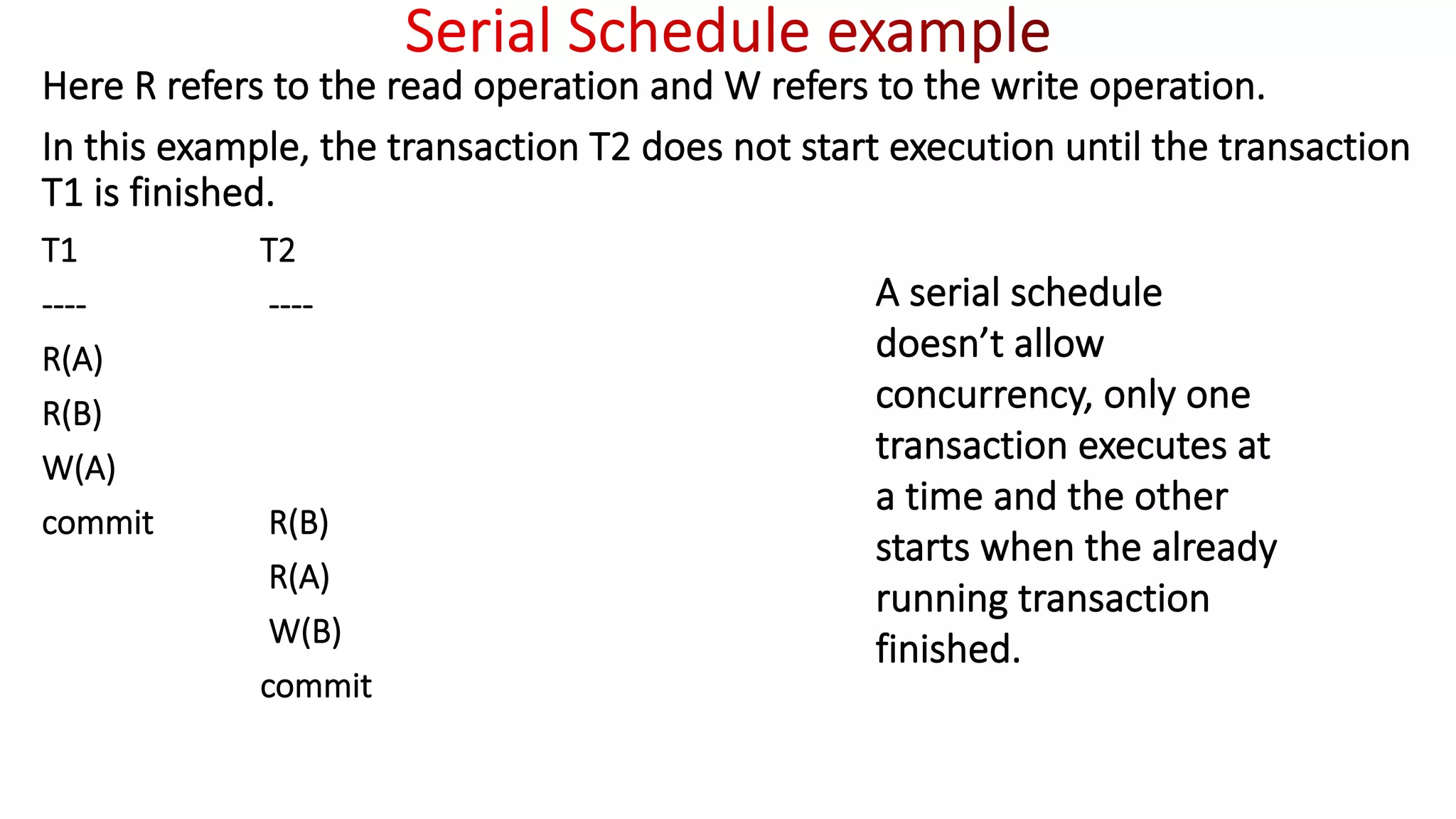
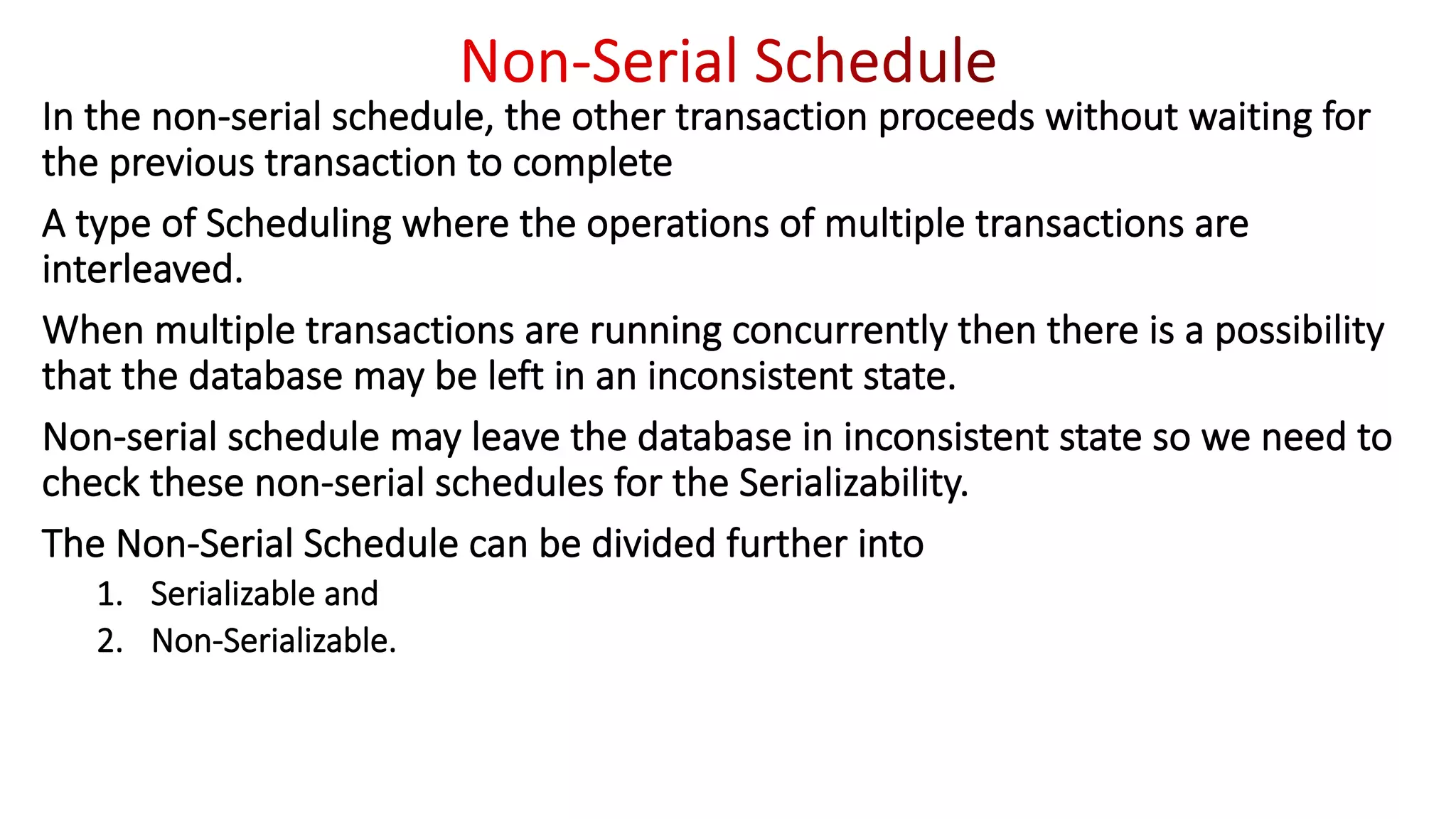



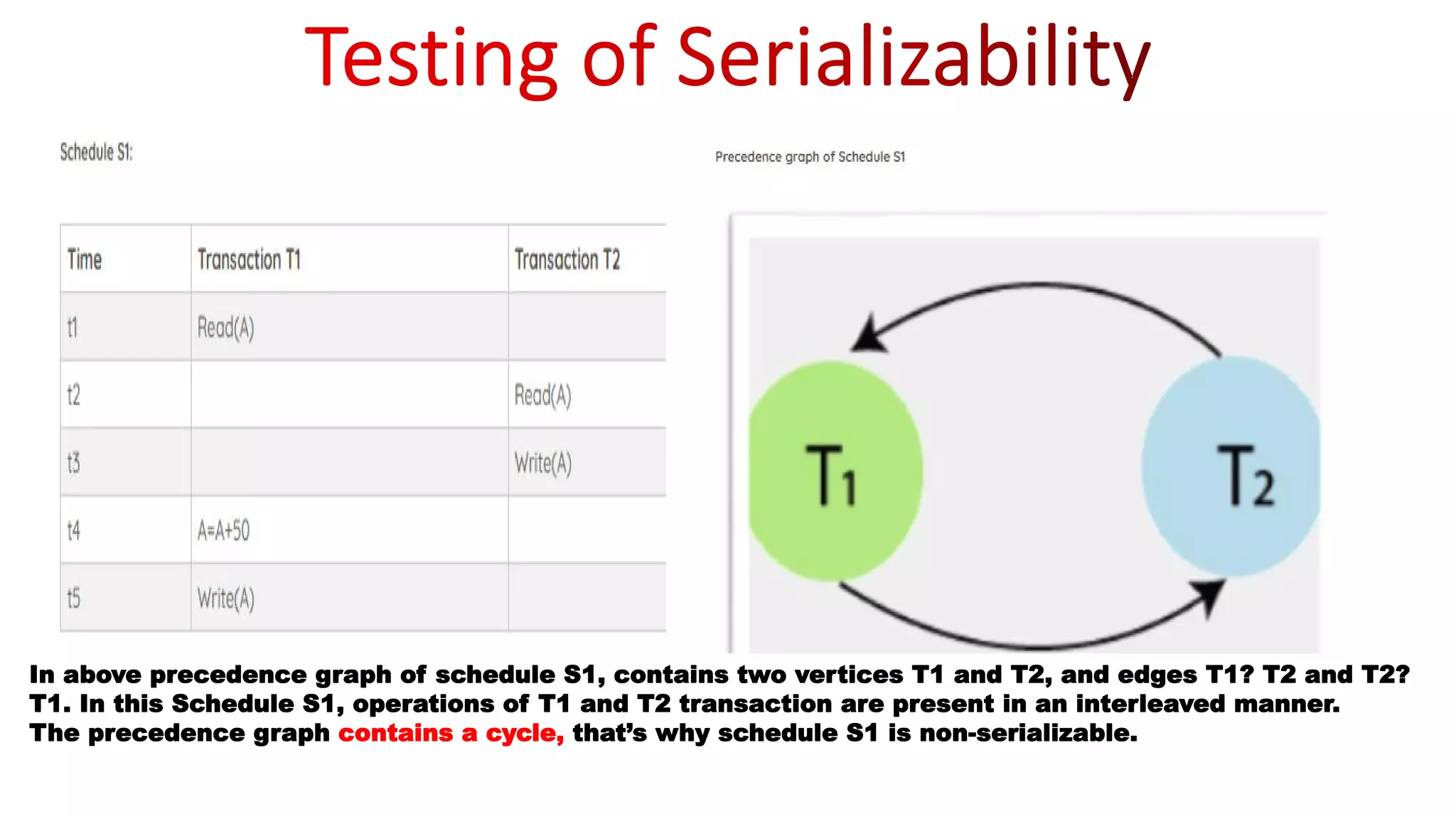

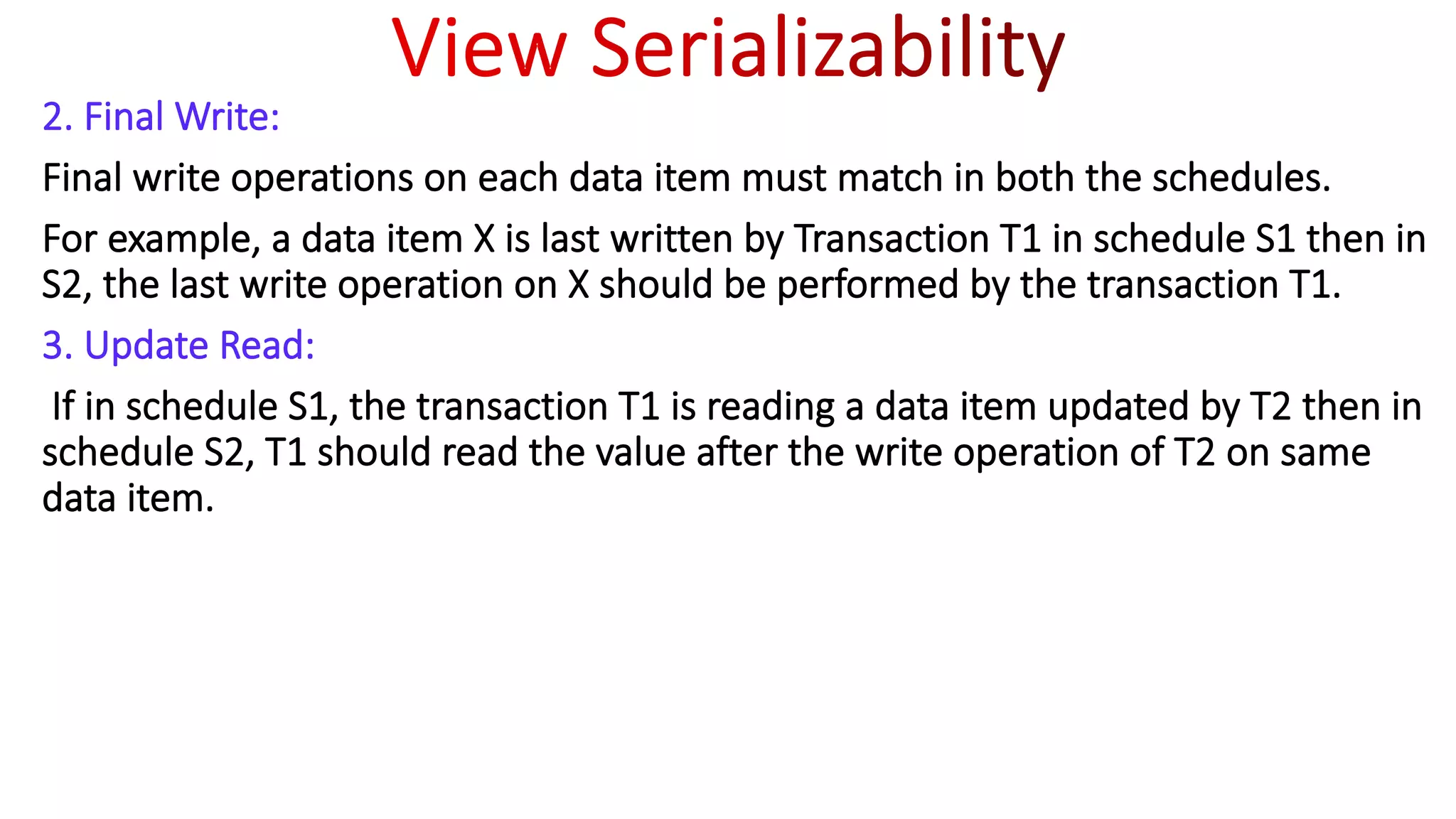



![• R3(X) and W2(X) [ T3 -> T2 ]
• W1(Y) and R3(Y) [ T1 -> T3 ]
• W1(Y) and W2(Y) [ T1 -> T2 ]
• R3(Y) and W2(Y) [ T3 -> T2 ]
• Constructing the precedence graph, we see there
are no cycles in the graph. Therefore, the
schedule is Conflict Serializable.
Two operations are said to be conflicting if
the belong to different transaction, operate
on same data and at least one of them is a
write operation.](https://image.slidesharecdn.com/serializability-220704121201-830557af/75/Serializability-14-2048.jpg)